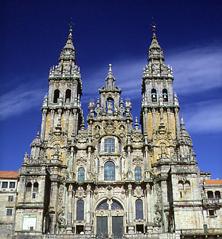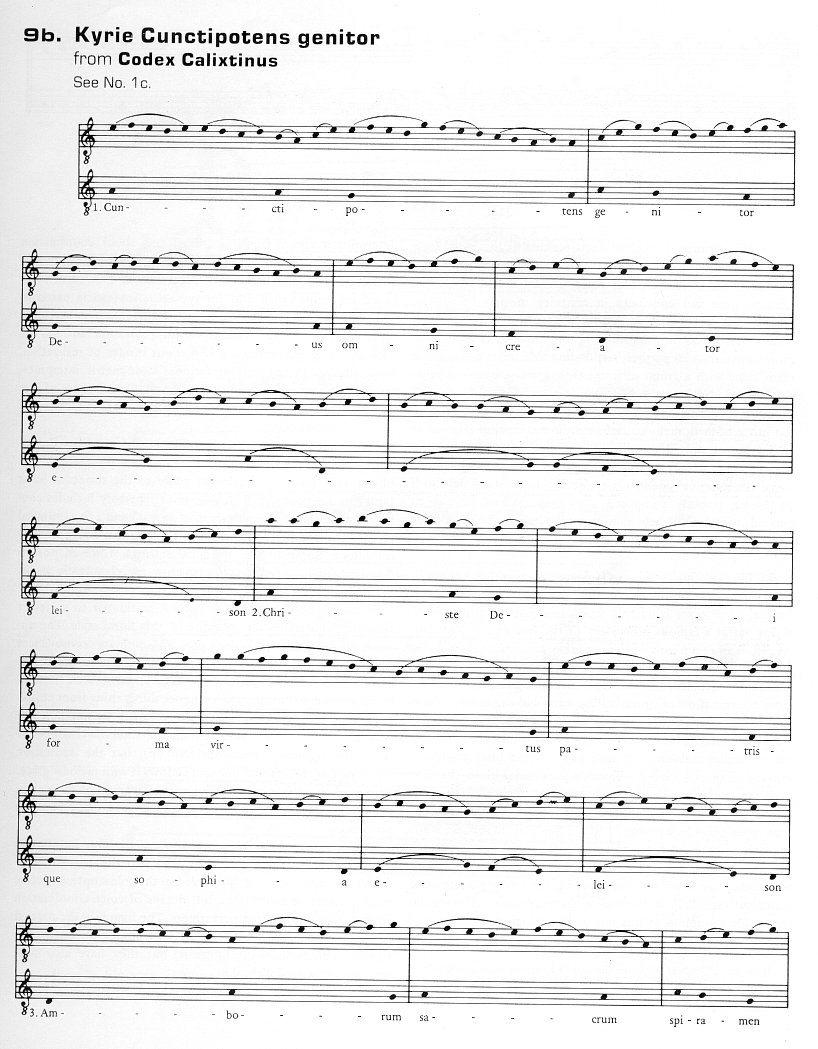
The Cathedral at Compostela

 |
The basis of this organum is the old standby Kyrie Cunctipotens genitor. After listening to the whole piece, try listening to it to pick out the Kyrie melody in the lower voice. The performance alternates sections of the chant performed monophonically with sections performed polyphonically: you should be able to distinguish the textures quite easily. Consonant intervals are ornamented, and there is a sense of movement toward consonant cadences (points of repose). Notice also how the addition of a second more intricate voice extends the duration of the chant significantly. A modern transcription of the score is below for those who desire to see it. You may find it easier to follow this. |
| Cunctipotens genitor.... | 0:00 | Small group sings syllabic line of music (a) monophonically |
| Cunctipotens genitor .... | 0:23 | Soloists sing organum version of the chant. (a') The chant is in the lower voice. |
| Christe Dei... | 1:25 | Small group sings syllabic line of music (b) monophonically |
| Christe Dei... | 1:45 | Soloists sing organum version of the chant. (b') |
| Amborum sacrum... | 2:35 | Small group sings syllabic line of music (c) monophonically |
| Amborum sacrum... | 2:51 | Soloists sing organum version of the chant. (c') |
Translation
|

|
